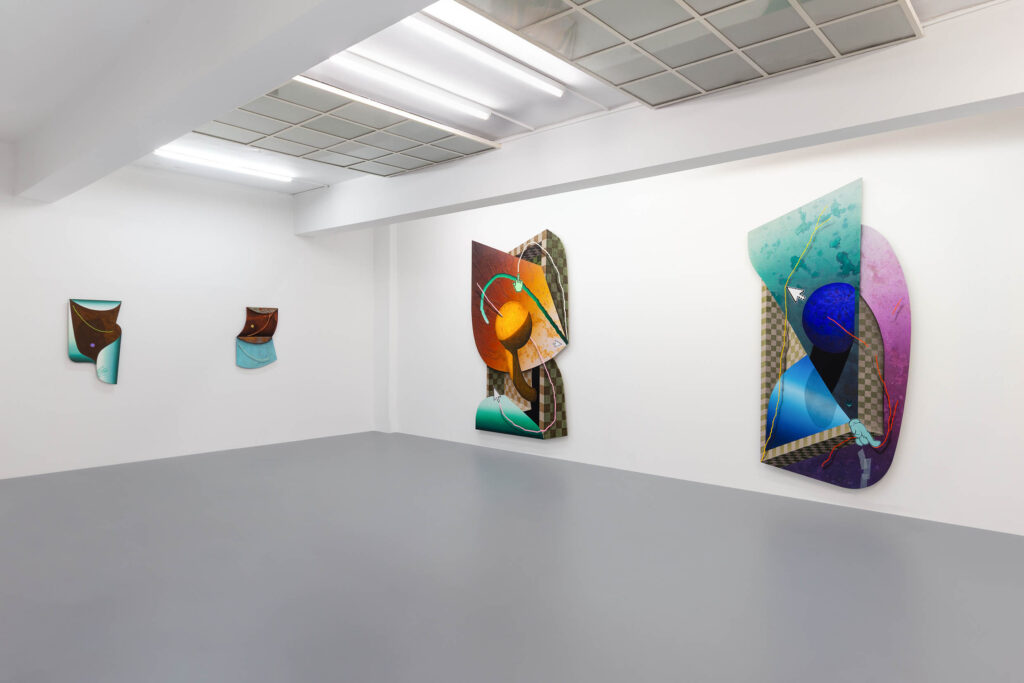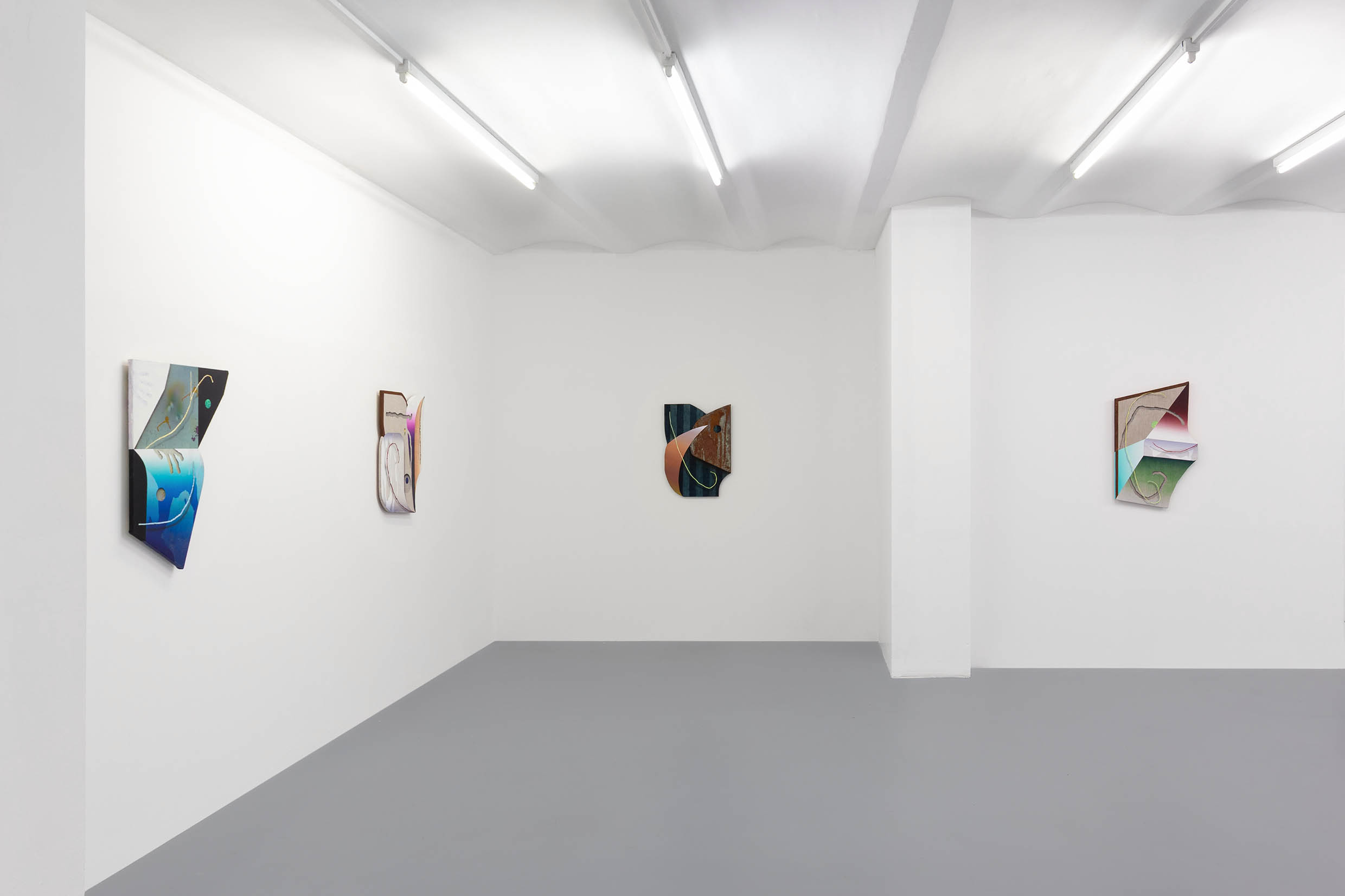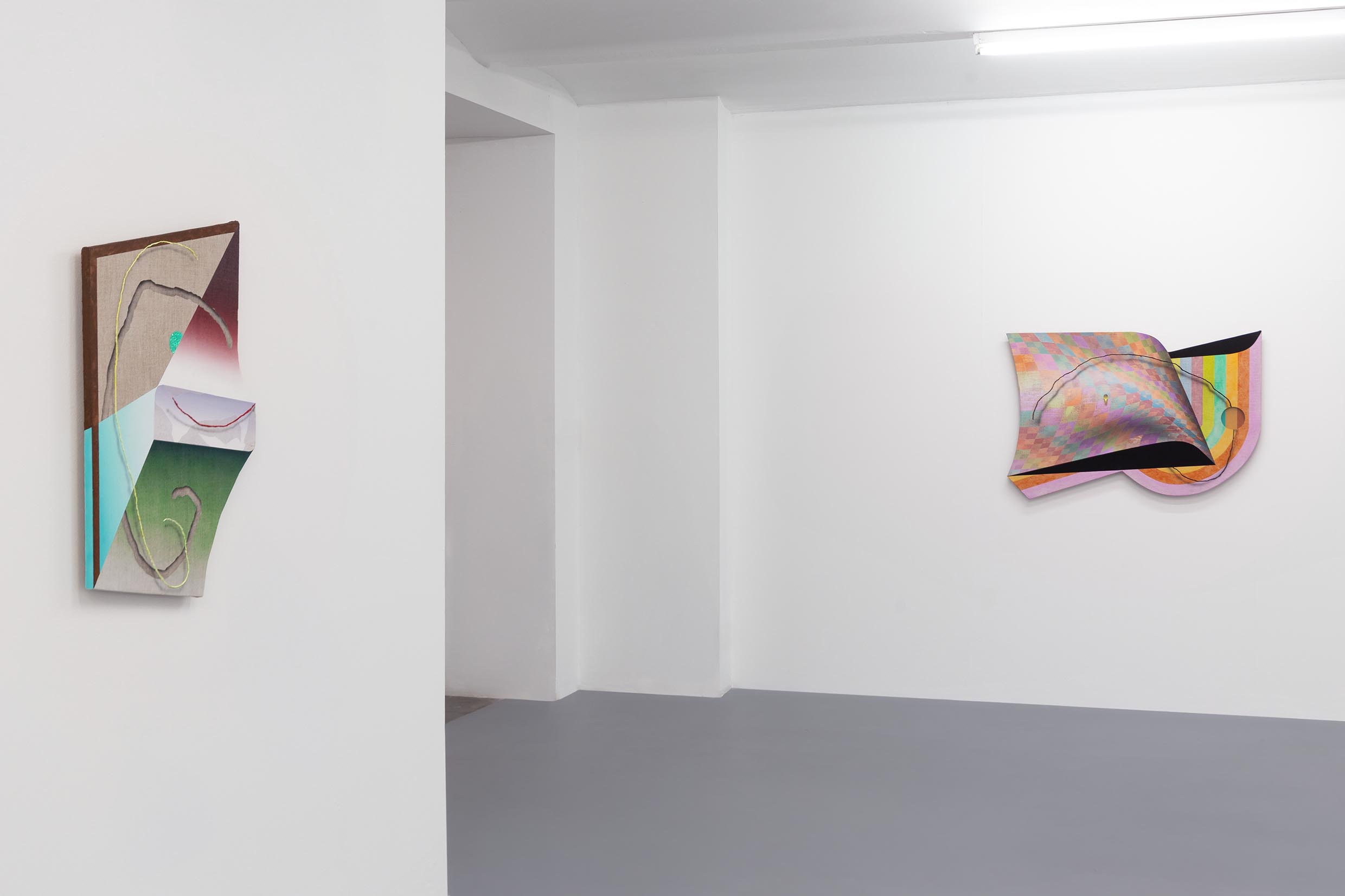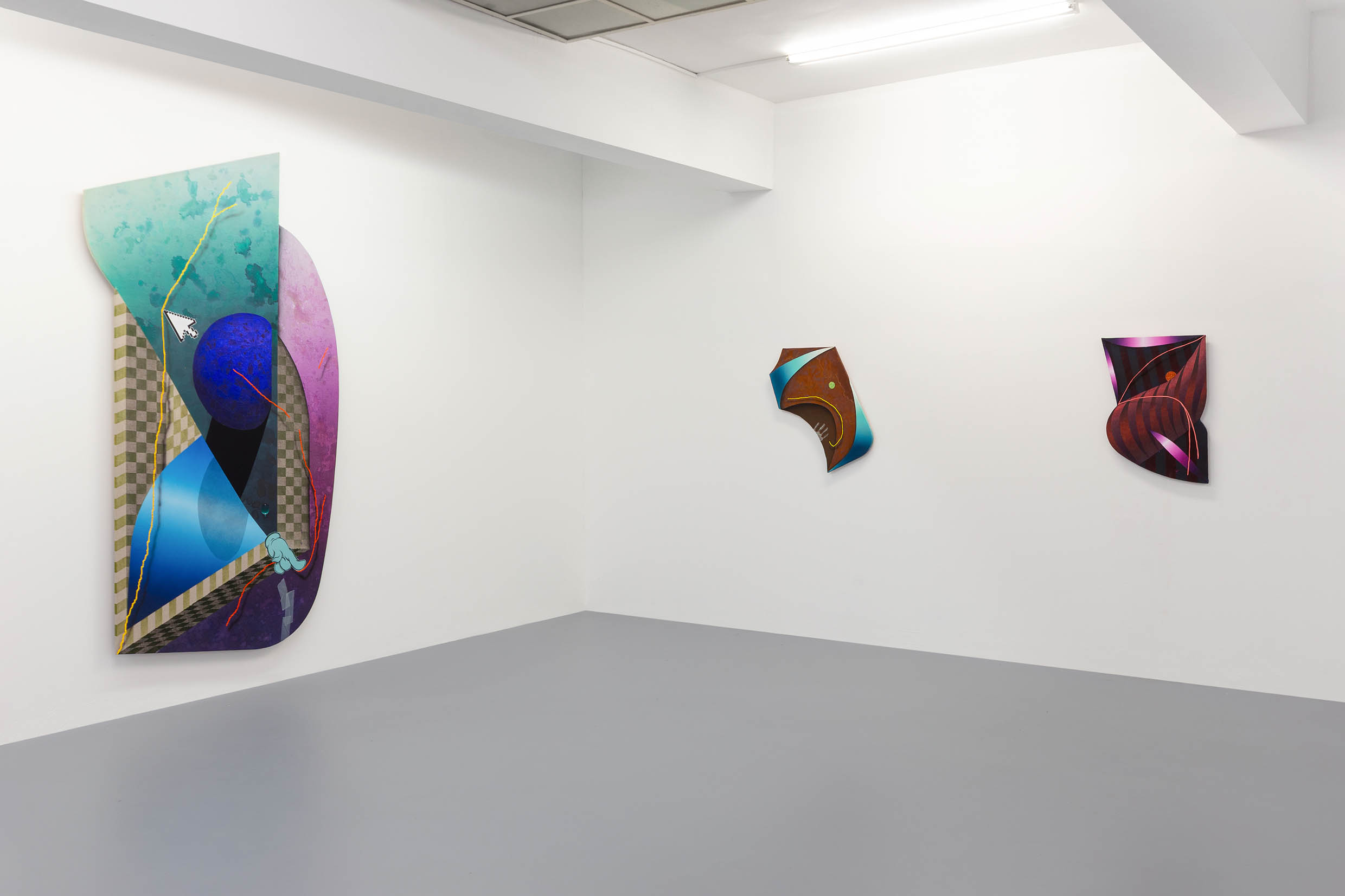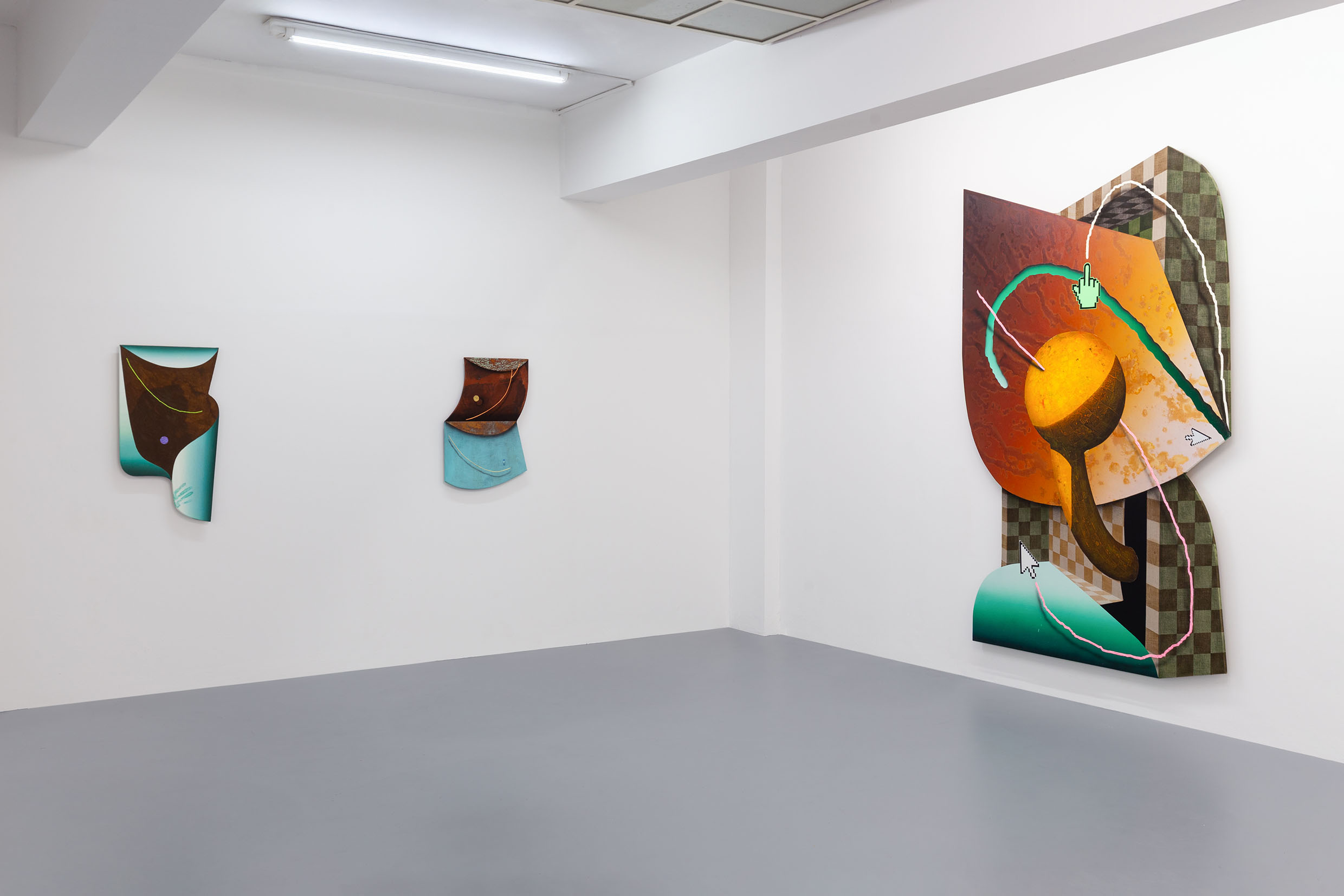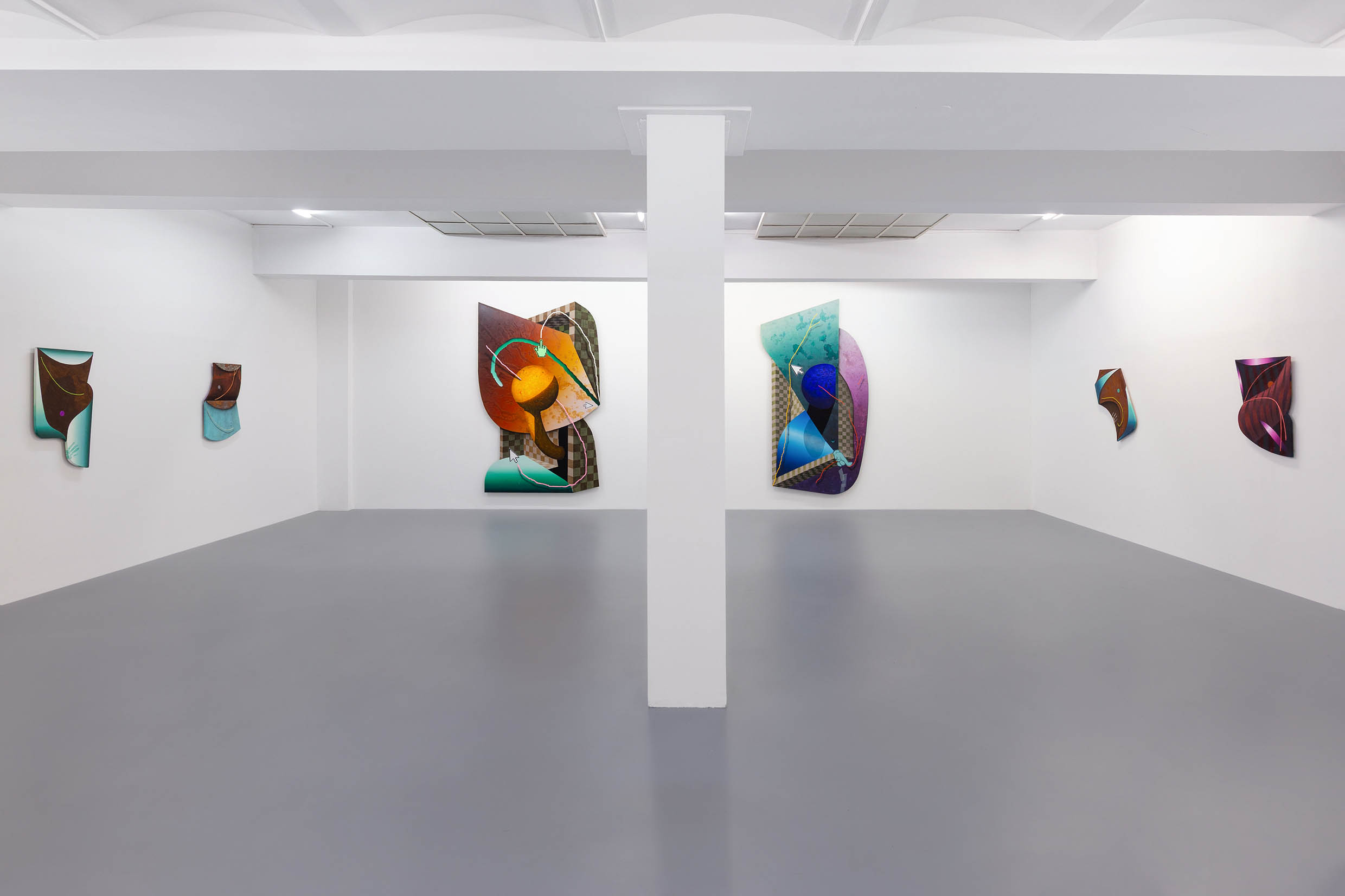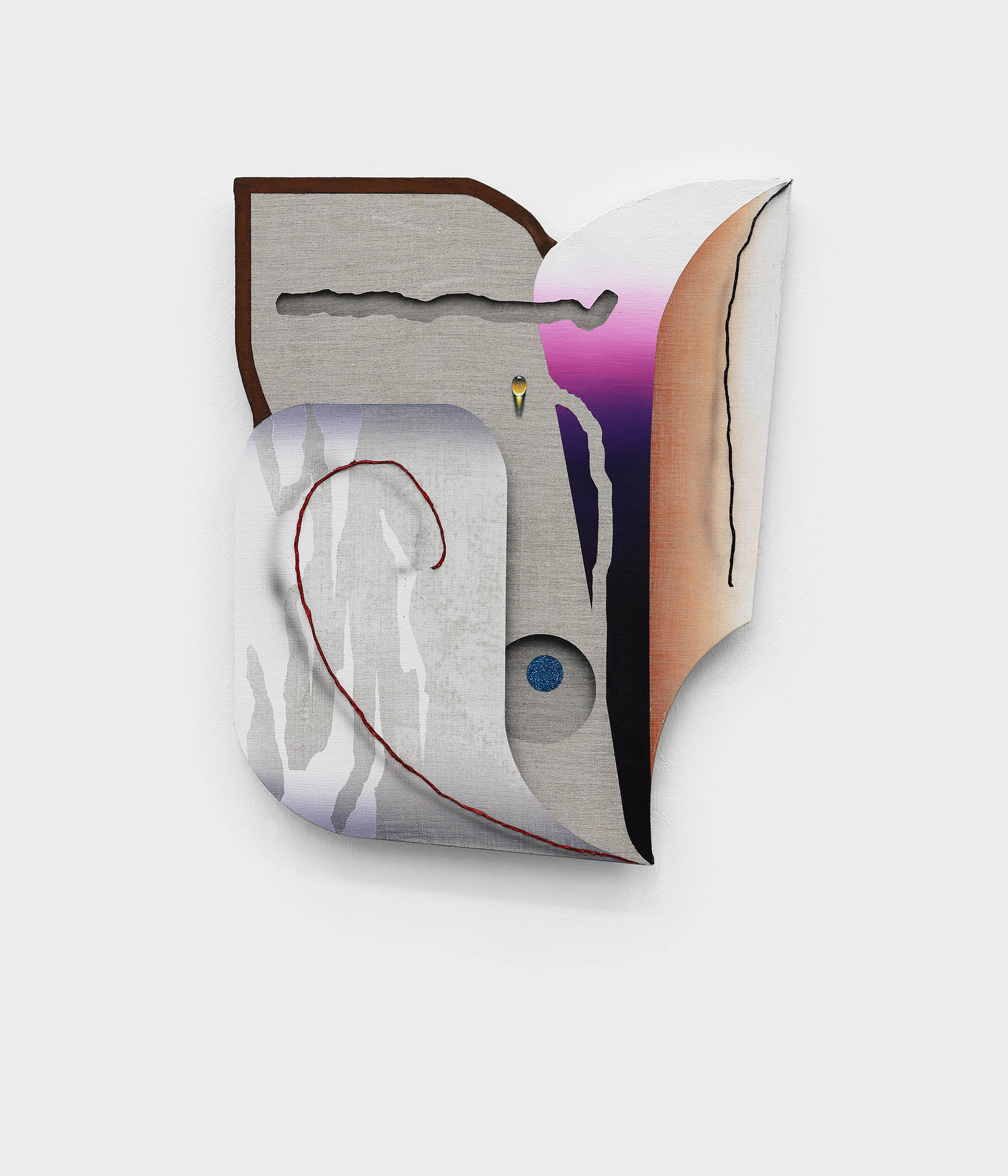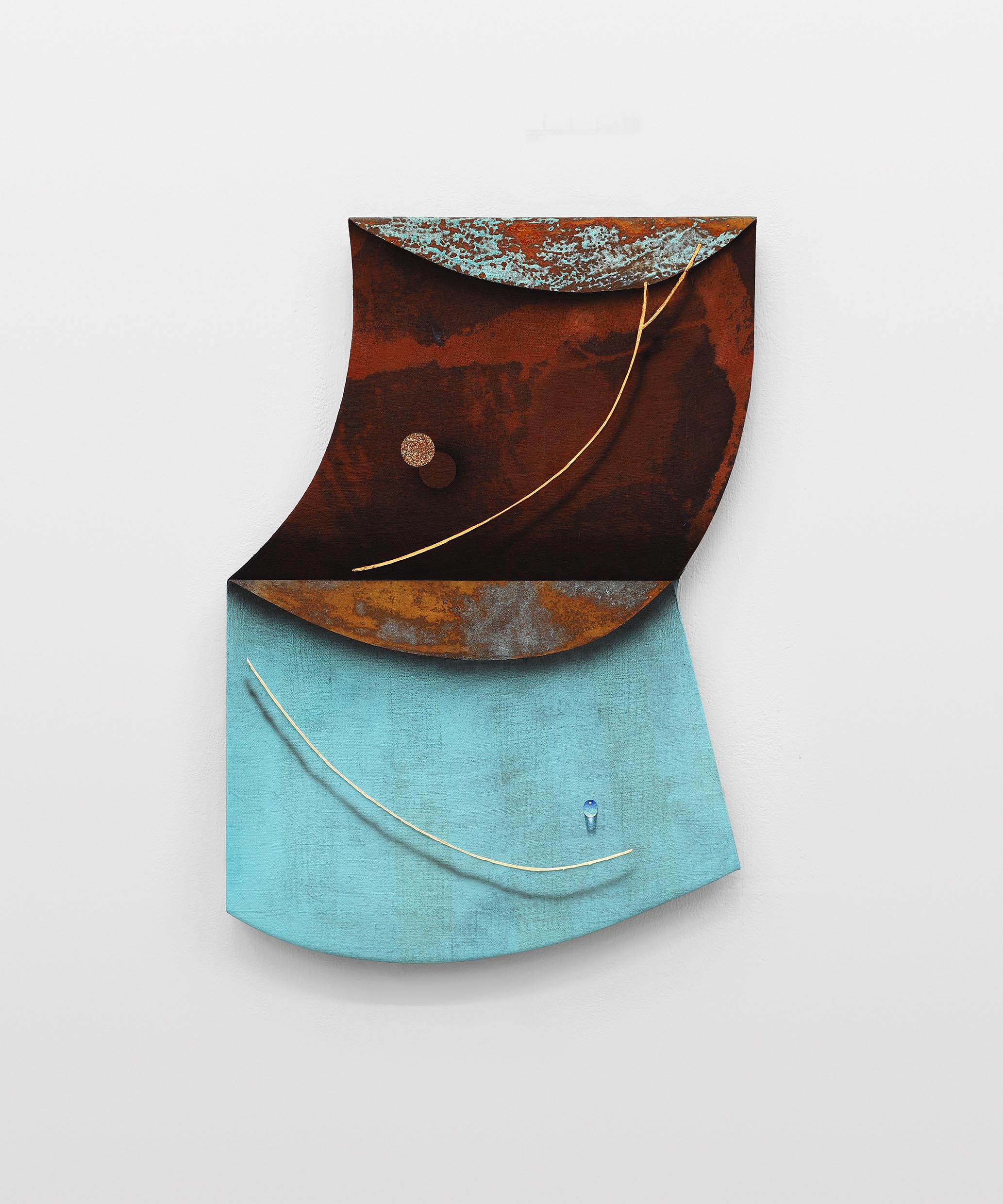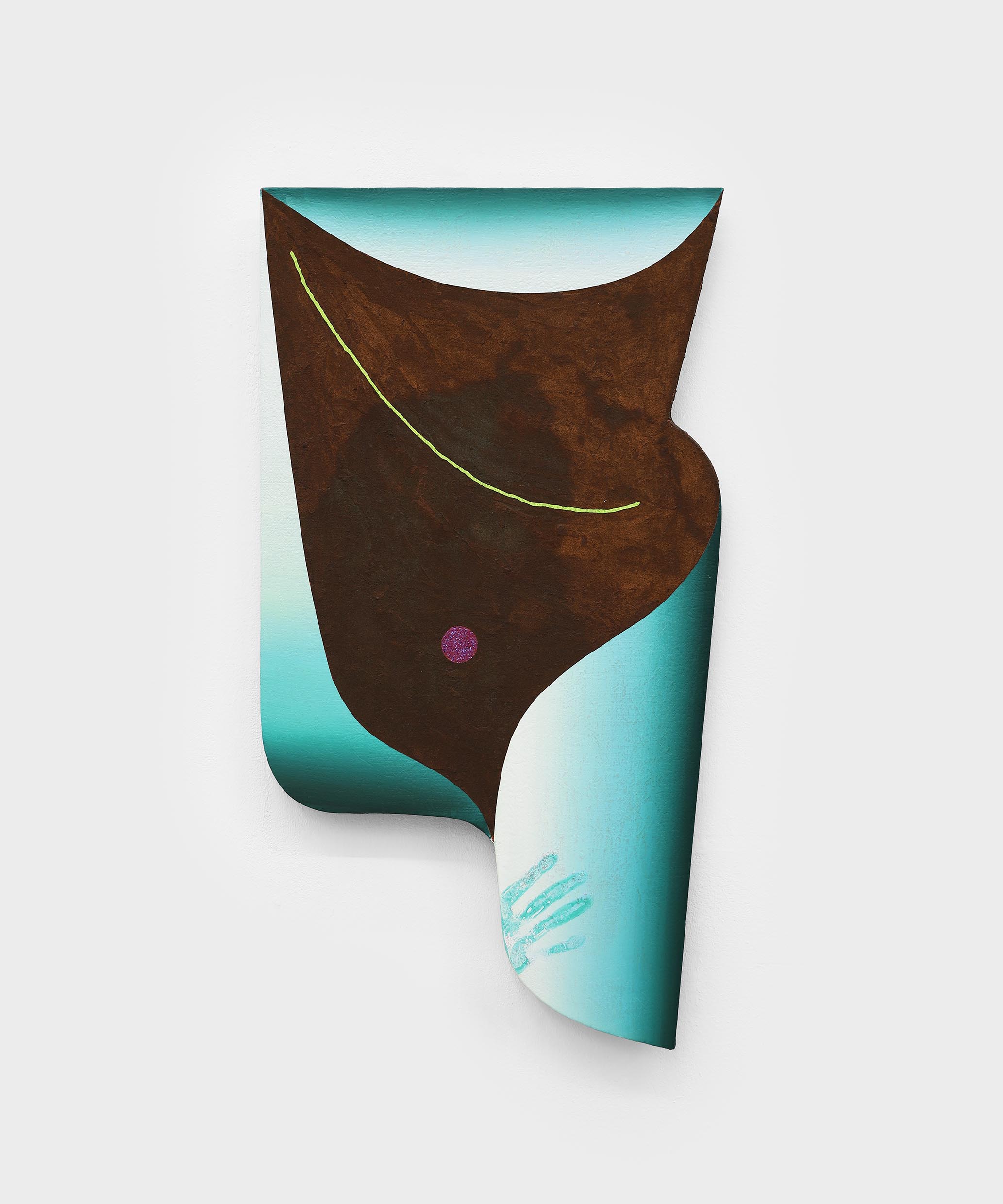No products in the cart.
Dominik Halmer Deep Surface
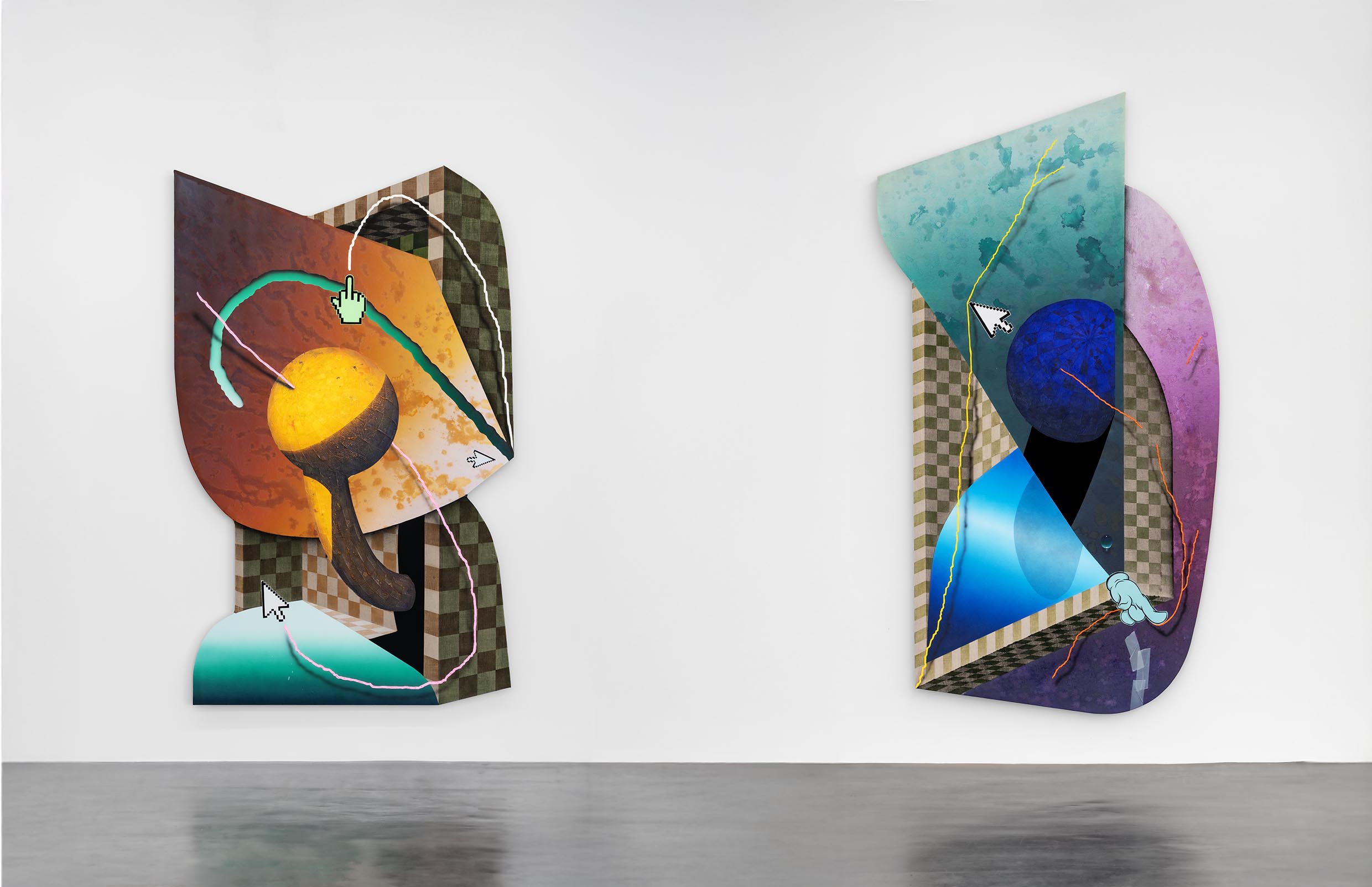
Dominik Halmer – Deep Surface
ÖFFNUNGSZEITEN ZU DEN DC OPEN
Fr 5. Sep, 18 – 22 Uhr
Sa 6. Sep, 13 – 19 Uhr
So 7. Sep, 13 – 17 Uhr
Dominik Halmer – Deep Surface
Deep Surface – ein Paradox? Der Titel klingt nach Tiefe und Oberfläche zugleich, nach Substanz und Simulation, nach einem Versprechen, das sich nicht einlösen lässt. Der Philosoph Maurice Merleau-Ponty spricht von der „Oberfläche als Tiefe des Sichtbaren“ und markiert damit eine poetisch-phänomenologische Wendung: Statt „Oberfläche“ als bloß äußeren Schein abzuwerten, betont Merleau-Ponty, dass das Sichtbare selbst tief ist, weil es das ist, was sich im Erscheinen zeigt – nicht trotz, sondern durch seine Oberfläche. Ein Bild zeigt nichts hinter der Oberfläche – die Oberfläche ist das Zeigende selbst.
Genau in diesem Spannungsfeld bewegen sich die Werke von Dominik Halmer. Als Maler versteht er das Bild als Geste des „Zeigens“, als unmittelbare Kommunikation über Bildsprache. Dabei hat er die Konvention, was ein Bild, ein Gemälde sei (etwa eine rechtwinklige Fläche an der Wand), nie als selbstverständlich hingenommen, sondern stellt immer wieder fundamentale Fragen: Welche Funktion hat ein Bild? Worauf bezieht es sich? Wie entstehen Sinn, Bedeutung – und damit auch Macht?
Aus dem analytisch-skeptischen Kontext von Albert Oehlen kommend, bei dem er an der Kunstakademie Düsseldorf studierte, entwickelte Dominik Halmer eine künstlerische Position, die singulär in der heutigen Kunstlandschaft ist. Die Vielfalt und Komplexität seiner„Shaped Canvas“ Arbeiten wurden einmal als „barocker Konstruktivismus“ bezeichnet. Mit Installationen wie in der Hamburger Kunsthalle oder dem Museum Wiesbaden, weitet er den Bildbegriff auf den Raum aus und macht den Betrachter zum aktiven Teilnehmer in einem Spiel mit Sinn, Symbolen und Metaphern.
In den Werken von Deep Surface, die teilweilse in der großen Ausstellung Macht & Sinn im Kunstverein Reutlingen erstmals präsentiert wurden, schöpft er aus dem gesamten Repertoire malerischer Mittel: Farbe, Illusion, Geste, Material, Symbol und Zitat verbinden sich zu komplexen Bildsystemen – physische Einheiten, die uns direkt gegenübertreten. Geometrische Formen, Glitzerpunkte, Farbfelder aus korrodiertem Eisen oder pfützenartige Farbverläufe treffen auf computergenerierte Bildräume. Immer wieder tauchen Elemente auf, die Prozesse des Wandels zeigen: Kreise, Kugeln, Cursor, Handabdrücke oder dick aufgetragene Ölschnüre. Nichts ist stabil – alles in Bewegung. Der Seinszustand der Dinge ändert sich.
Die Großformate „Macht“ und „Sinn“ (beide 2025) scheinen im Galerieraum über eine Gruppe kleinerer Werke zu wachen wie Eltern über ihre Kinder: die „Shields“. Der Titel spielt auf das niederländische Schilderij (Gemälde) an, klingt aber auch nach Wappen oder Schutzschild. Und genau so treten sie auf: als Zeichen, als Behauptungen, als visuelle Formeln. Manche glitzern, manche tragen Fransen. Sie sind zugleich Bild und Objekt, durchdacht und verspielt. Sie laden ein, emotional assoziativ oder auch intellektuell analytisch gelesen zu werden. Sie reflektieren Systeme der Ordnung und Destabilisierung, Kommunikation und Symbolbildung.
Was auf den ersten Blick glatt und spielerisch wirkt, entpuppt sich bei näherem Hinsehen als visuelle Denkfigur über das Verhältnis von Projektion und Wirklichkeit. Deep Surface verweist dabei nicht nur auf eine ästhetische Haltung, sondern auf eine Haltung zur Welt: Die Oberfläche ist nicht das Ende der Bedeutung – sie ist ihr Einstieg.
Dominik Halmer – Deep Surface
Deep Surface — a paradox? The title itself suggests both depth and surface, substance and simulation, a promise that may never fully be fulfilled. The philosopher Maurice Merleau-Ponty spoke of “the surface as the depth of the visible,” capturing a poetic-phenomenological shift: instead of dismissing “surface” as mere appearance, Merleau-Ponty emphasizes that the visible itself is profound — not despite, but through its surface. A painting doesn’t reveal something behind the surface — the surface is the very act of showing.
This tension is exactly where Dominik Halmer’s work positions itself. As a painter, he sees the image as an act of showing, a form of immediate communication through visual language. He has never taken for granted the conventions of what a painting is — for example, a rectangular object hung on a wall — but instead continually interrogates the fundamentals: What function does a painting serve? What does it refer to? How are meaning, significance — and ultimately power — generated?
Emerging from the analytically skeptical context of Albert Oehlen, under whom he studied at the Kunstakademie Düsseldorf, Halmer has developed a singular position in today’s art landscape. The diversity and complexity of his shaped canvas works have been described as a kind of “baroque constructivism.” With installations at venues such as the Hamburger Kunsthalle and Museum Wiesbaden, he expands the concept of the image into physical space, turning the viewer into an active participant in a game of meaning, symbols, and metaphors.
In the works shown in Deep Surface, some of which were first presented in the major exhibition Power & Meaning at Kunstverein Reutlingen, Halmer draws on the full range of painterly tools: color, illusion, gesture, material, symbol, and quotation merge into complex visual systems — physical units that confront the viewer directly. Geometric forms, glittering elements, fields of corroded iron, or puddle-like flows of color meet digitally generated image spaces. Recurring motifs suggest states of transition: circles, spheres, cursors, handprints, or thick trails of oil paint. Nothing is fixed — everything is in flux. The condition of things is always changing.
The large-format works Power and Meaning (both 2025) appear in the gallery space like watchful parents presiding over a group of smaller pieces — the Shields. The title refers both to the Dutch word schilderij (painting), and to shields or coats of arms. And this is how they function: as signs, as assertions, as visual formulas. Some glitter, others are fringed. They are both images and objects, thoughtful and playful. They invite emotional associations as well as intellectual analysis. They reflect systems of order and disruption, communication and symbol-making.
What may appear at first glance as smooth and playful reveals itself on closer inspection as a visual meditation on the relationship between projection and reality. Deep Surface points not only to an aesthetic stance, but to a worldview: the surface is not the end of meaning — it is where meaning begins.
